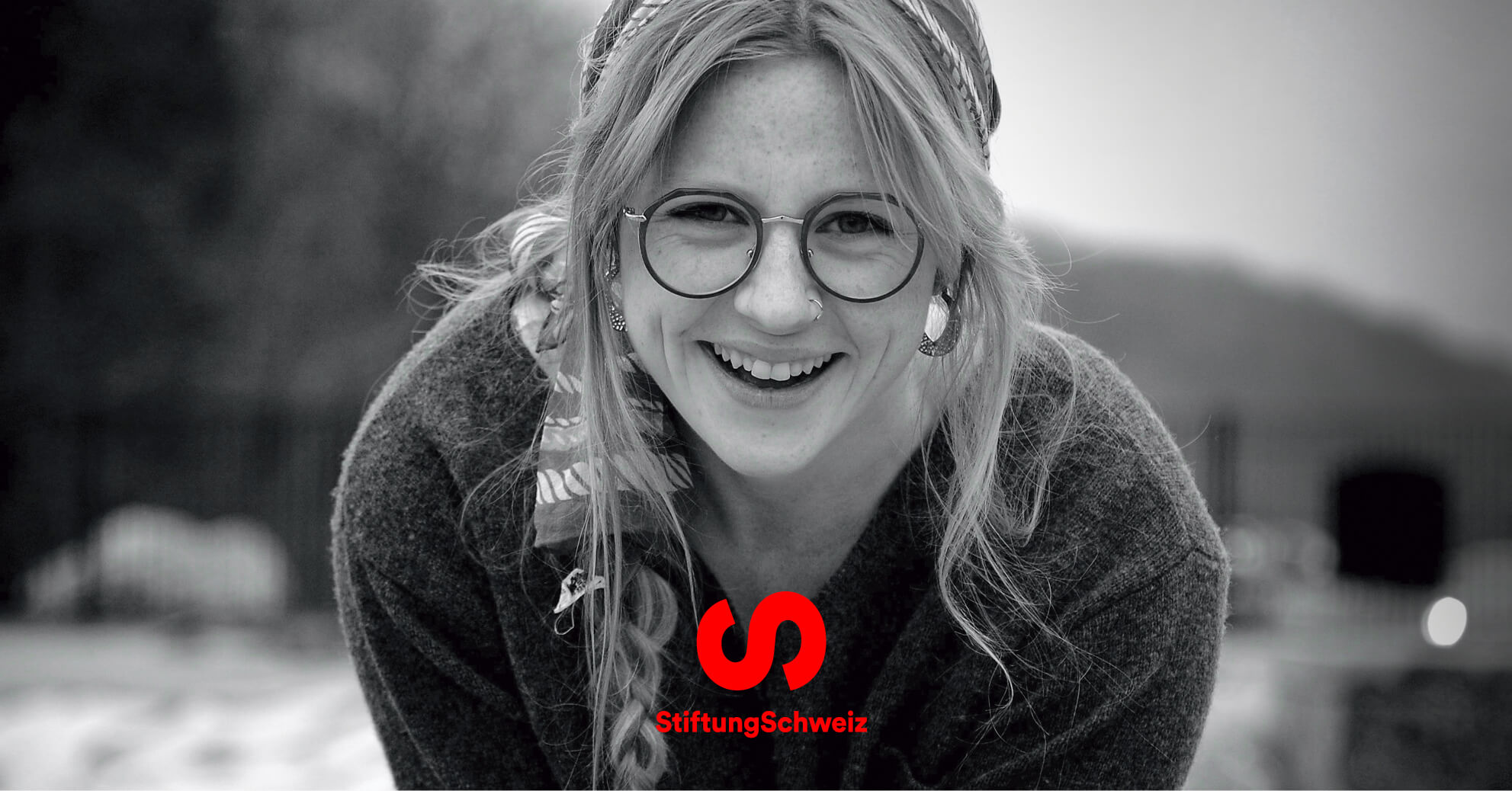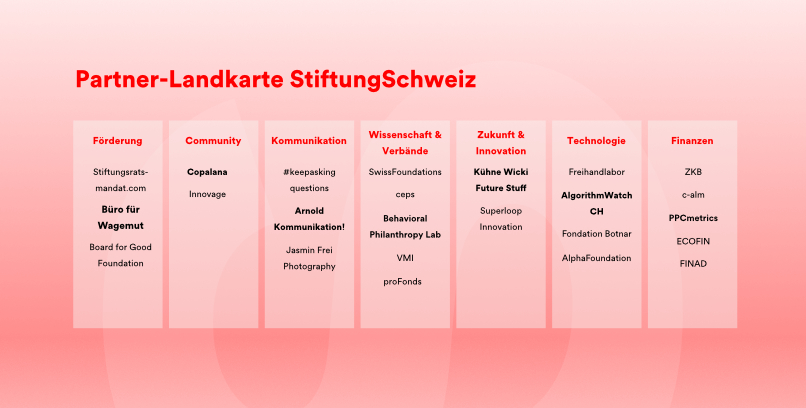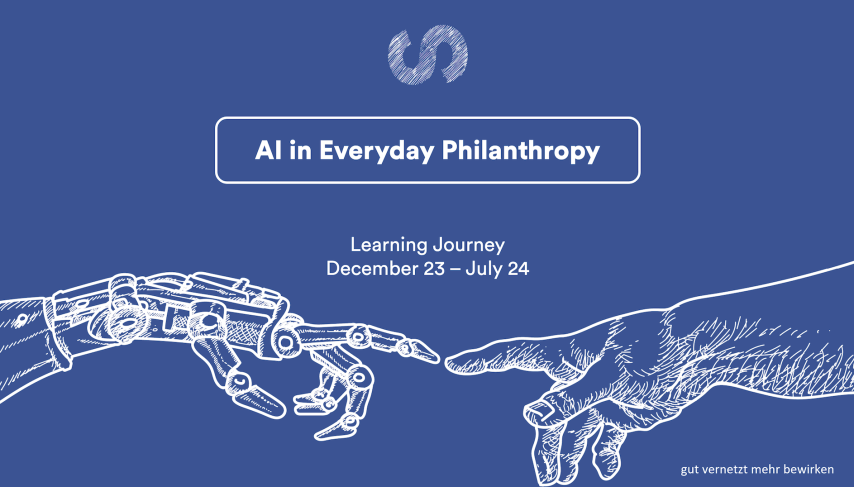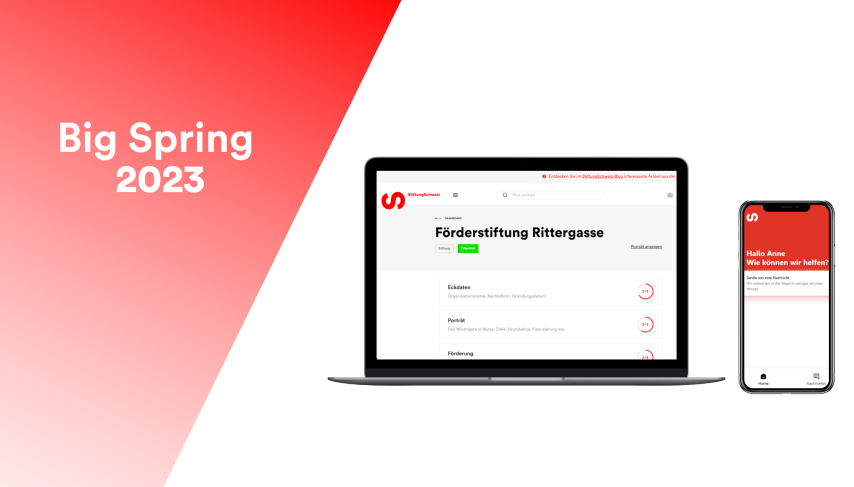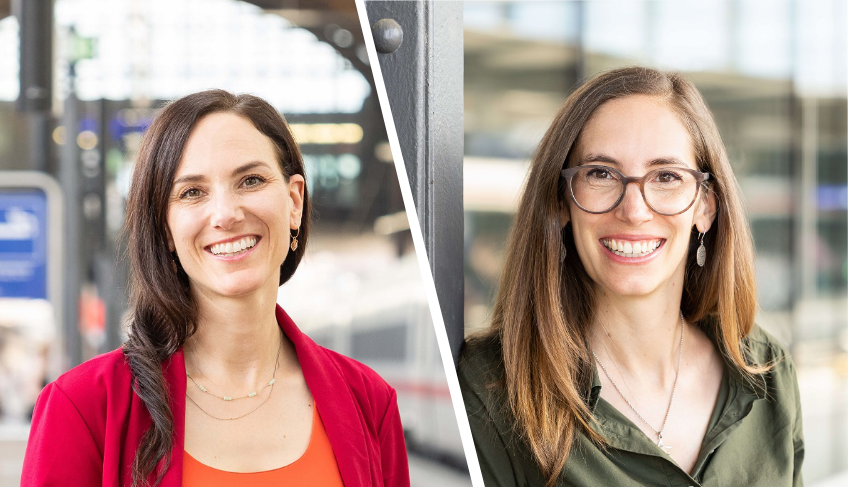
After two dozen interviews with funding agencies, it was clear: A digital space for more collaboration is needed. Claire de Trey-Freymond, Product Development, and Fabienne Angst, Partner Solutions, put their heads together as a duo and developed the network offering in just a few months. Since June, it has been part of the StiftungSchweiz offer, and since September, it has been open to all users. In this interview, the two give an insight into the innovation process.
You are responsible for the launch of the network offer on stiftungschweiz.ch. Can you briefly explain what you have developed there?
Fabienne Angst (FA): We are convinced: Well networked we can achieve more! Because exchange promotes transparency and, above all, facilitates effective collaboration. In the new service, StiftungSchweiz users can therefore easily create and actively expand their own networks. In these spaces, they can find interested funding partners and forge alliances, start controversial discussions, and get the inside scoop. In a network, it is easier for everyone to keep up to date with the latest topics or to be inspired by new topics. Networks can be open, so that they can be found by new interested parties, or closed, so that a protected communication space is created.
Does this now mean that exchanges should only take place digitally?
Claire de Trey (CdT): No, we think that physical meetings are and remain important as well – social exchange in general. Nevertheless, we see a need for an overarching vessel in which actors can work together, discuss, share and file documents.
FA: A digital home, so to speak. We think of it as complementary to physical exchange. Because it always takes people first. The ideas and needs come from real life, but can then be acted out digitally. We now offer the tool for this
Sounds exciting! Tells more about how this offer came about.
FA: We wanted to provide more offerings for grantmaking foundations. Those that really need and use them. We conducted a dozen interviews for this purpose.
CdT: The network went from conceptualization and analysis to a beta phase in just four months. A completely new product that we have developed “from scratch”.
FA: It’s an offer that was created completely out of customer requests, even though the needs were really very different. In each interview, we heard different ones. Conceptually, that was a big challenge. Finally, we have worked out a feature in which the needs are covered in a balanced way. And note: these are very diverse concerns, processes, systems, ways of working. I once heard a fitting statement to that effect: “Do you know a foundation. Do you know a foundation.” (laughs). And that’s right! All foundations are so different.
You obviously worked together intensively for this project. How did you experience this collaboration? And was she different from what she was used to?
CdT: We had a narrow time window and had to make decisions quickly. I can still remember how we had lively discussions and played ideas with each other in the office. Stefan Schöbi, our CEO, then often joined the discussions and we all spurred each other on until the concept was “safe enough to try”.
FA: We couldn’t have done it if we didn’t make decisions on an ongoing basis. We had to keep going and keep building.
CdT: I also found it brilliant to work in pairs. So we were able to develop something out of nothing and always had a sparring partner at our side. That was extremely valuable.
FA: Two people thrown together: that can also be troublesome. In our case, the combo fit. We quickly became one (laughs). And yes, on your own you simply don’t cover everything either.
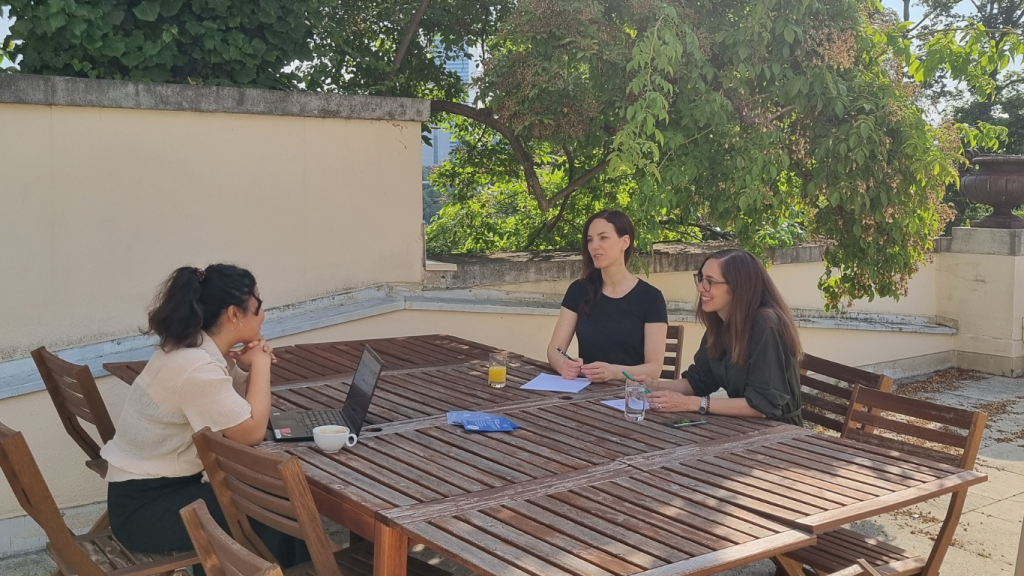
What would you like to see in the network offering?
CdT: That it gets hands and feet. That people actually use it.
FA: Yes, and that we continue to work so closely with the users, with this co-creation. We are always open to input. We want to keep listening and developing what they really need. There are always trends and we can learn about them from the users.
Cdt: It’s a cycle: they have to try it out and feel what they want and need themselves. We then take that and continue to work.
What are the concrete application possibilities of the networks for the different users of StiftungSchweiz?
CdT: The network is one of our very broad offerings with a great wealth of potential use cases. It can be used for co-funding, alliances, collaborations and thematic exchange, as well as for small group coordination – we deliberately did not narrow down what it can be used for.
FA: It will be exciting to see what makes the most sense and what the networks are used for. One example would be the issue of succession financing.
CdT: I thought what you mentioned in the webinar was exciting, Fabienne. Usually you always know the same five people. Once you’ve exhausted your contacts, you’re back in the same place. With the network, you have the opportunity to reach more people. Of course, the condition for this is that you remain active, commenting and not just passively watching. Best of all, you can use the portrait to show where your focus lies.
FA: Exactly! That’s why the portraits are so important. After all, the foundation’s purposes are often very broad, as they cannot be changed. As a result, no one from the outside knows exactly what the foundation is working on. Some foundations publish their strategies on their website, but of many you don’t know what they are looking for right now.
CdT: We understand the exchange between nonprofits and funders to be very dynamic. For example, foundations can communicate that they want to go in a new direction. Others may already have experience and can provide advice or jump right in. You can test ideas, give each other input, share lists, and organize meetings. So there are still many possibilities for action!
Who is the network offer aimed at?
CdT: In June, we first entered a beta phase and tested diligently. Since September, the network module is now open to all. It is simply important that the person is active in the sector: large and small nonprofits or funders, representatives from academia or companies, experts, local councillors and many more.
What are the next steps for this project?
CdT: We have developed a good base and are now watching how the sector uses the offer. The medium is there, the content has to be contributed by the users themselves.
FA: Since the summer, we have also been offering network moderation. The big advantage is that we bring everyone to the table and help break the ice. At the moment, we have a moderation mandate for about 10 networks.
How does such network moderation work in concrete terms?
FA: The foundation or nonprofit organization interested in this service is best to contact us by chat or mail. Then we discuss what goal the organization wants to achieve with the network. Sometimes it’s about a funding alliance that needs to be built for a successful project. Sometimes around thematic networking in a new focus area in a funding organization. We discuss the division of tasks and the concrete procedure, create the network and invite the first members to join. One step then results in the other. Of course, we also regularly evaluate the successes to date and adjust the strategy if necessary.
The network offer has been online since the beginning of June. How is it received and what kind of feedback have you received so far?
FA: The users are very curious and open. We hope to grab this momentum and take everyone along for the ride. We also get great feedback in the webinars. The participants see great potential in the new offer and say that we have developed something that makes sense. A nice compliment from a small foundation from a niche even told us, “A product like this opens the world for us.” This motivates us to continue.
If you have any questions or suggestions about the network offer or are interested in our moderated network offer, please contact us via chat on our website or by e-mail: fabienne.angst@stiftungschweiz.ch. Free webinars on the networks will continue to take place and can be booked here.


